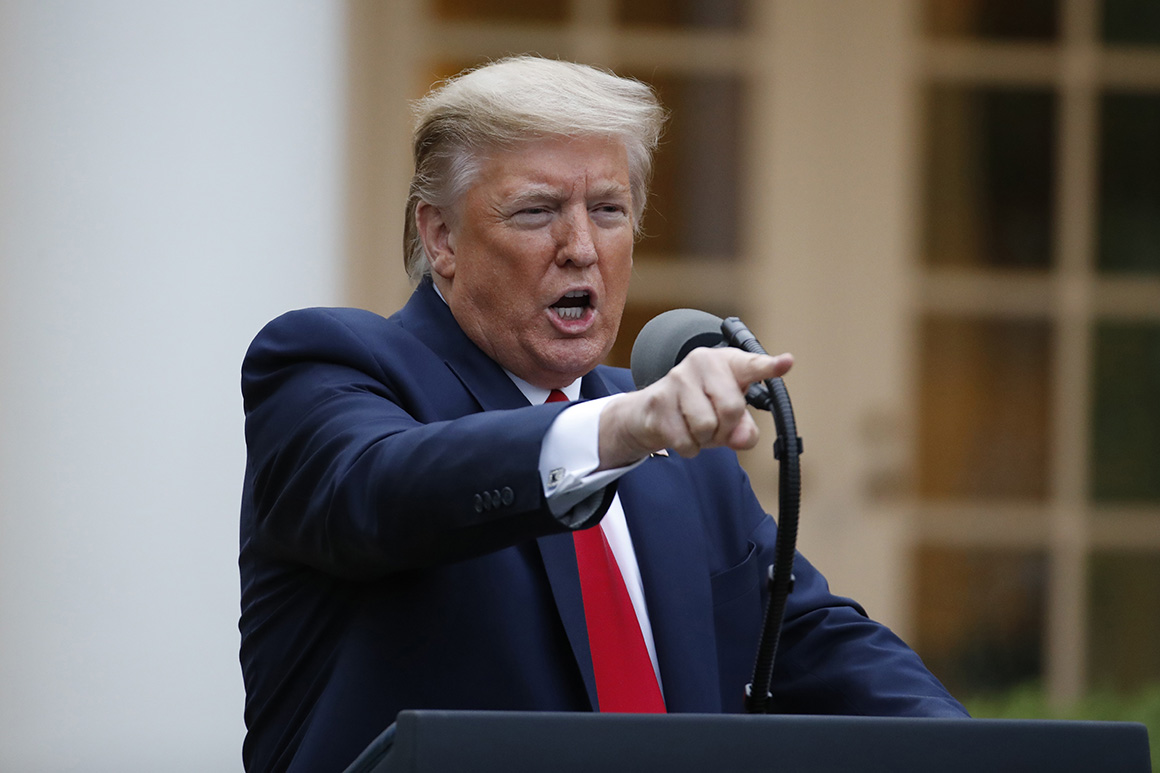
The eventual solution — a shift in FDA policy that let labs develop and deploy their own tests, beginning on Feb 29 — came nearly a week after APHL urgently requested the regulatory relief.
Britta Jewell, an epidemiologist at Imperial College, London, told POLITICO that the lack of early and widespread testing in the U.S. played an important role in the timing of social distancing policies. Her work suggests that implementing the policies two weeks earlier could have reduced coronavirus deaths tenfold.
“Many countries — not just the U.S. — were understandably trying to time social distancing policies to minimize economic pain,” Britta said, “but it’s very difficult to get the timing right if you don’t know with reasonable confidence where the hot spots are or how many people are infected.”
China Monitoring
Trump’s Timeline
Reality Check
The document accurately notes that China prevented experts from the CDC and the World Health Organization from assessing the outbreak in early February. But it omits context — cuts to international public health efforts by the Trump administration prior to the pandemic had left a smaller footprint in China.
According to reports by Reuters, the administration eliminated a public health position in Beijing last July that had embedded an American epidemiologist in China’s disease control agency. More broadly, the CDC has cut dozens of China-based positions since Trump took office.
The CDC denies that the reduced American presence affected its assessments of the pandemic threat.
U.S. intelligence agencies were also issuing their own classified warnings in January and February about the global danger posed by the virus and attempts by Chinese officials to minimize the apparent severity.
Public Communications
Trump’s Timeline
Reality Check
While technically accurate, the campaign’s descriptions omit the fact that Trump’s public statements throughout February repeatedly downplayed the pandemic.
While the White House Coronavirus Task Force did provide a briefing at the National Governors Association meeting, the panel stated that „the risk to the American public remains low at this time,” according to a summary released by Health and Human Services. Likewise, during the touted press briefing in India, Trump incorrectly stated that the virus was „very well under control in our country“ and claimed the “whole situation will start working out.”
The White House letter to Congress did request $2.5 billion, although $535 million was redirected from Ebola prevention and treatment. Ultimately, after weeks of negotiation, Congress passed a $2 trillion relief package in late March with more than $120 billion in public health funding.
Vaccine Production
Trump’s Timeline
Reality Check
The vaccine partnerships are moving forward, and public health experts say the federal government’s financial backing could help expedite a vaccine.
But Trump has repeatedly overestimated and overpromised how quickly a vaccine could be deployed. Optimistically, researchers say a vaccine could be ready after a year to 18 months of development and testing. But it would take more time to ramp up production.
Experts say a more immediate need was more production of personal protective equipment for health workers on the front lines. The list makes no mention of actions to accelerate that production until late March.
Travel Restrictions
Trump’s Timeline
Reality Check
Trump frequently defends his record by pointing to China travel restrictions announced on Jan. 31, a move broadly defended by public health experts despite significant gaps.
Further efforts to contain travel from other countries, once the virus had escaped China and gained footholds throughout Europe and Asia, didn’t come until the end of February. By then, strains of the virus originating in Europe were likely already circulating throughout New York City. Trump issued a comprehensive set of European travel restrictions on March 11. Experts say Iran was likely an early hot spot, although data on the virus’ spread in that country is limited.
While travel restrictions are a widely accepted tool for containing international disease outbreaks, some experts have criticized the focus on foreign travelers — noting that American citizens are no less likely to contract the disease and spread it upon their return.
While returning citizens are typically screened at airports, many have gone home with little more than an information pamphlet and instructions to self-quarantine. In contrast, Hong Kong — touted by some public health experts as a model international response — has run random saliva tests and subjected nearly all travelers to mandatory 14-day quarantines with criminal penalties for disobeying.
Source: politico.com
See more here: news365.stream






